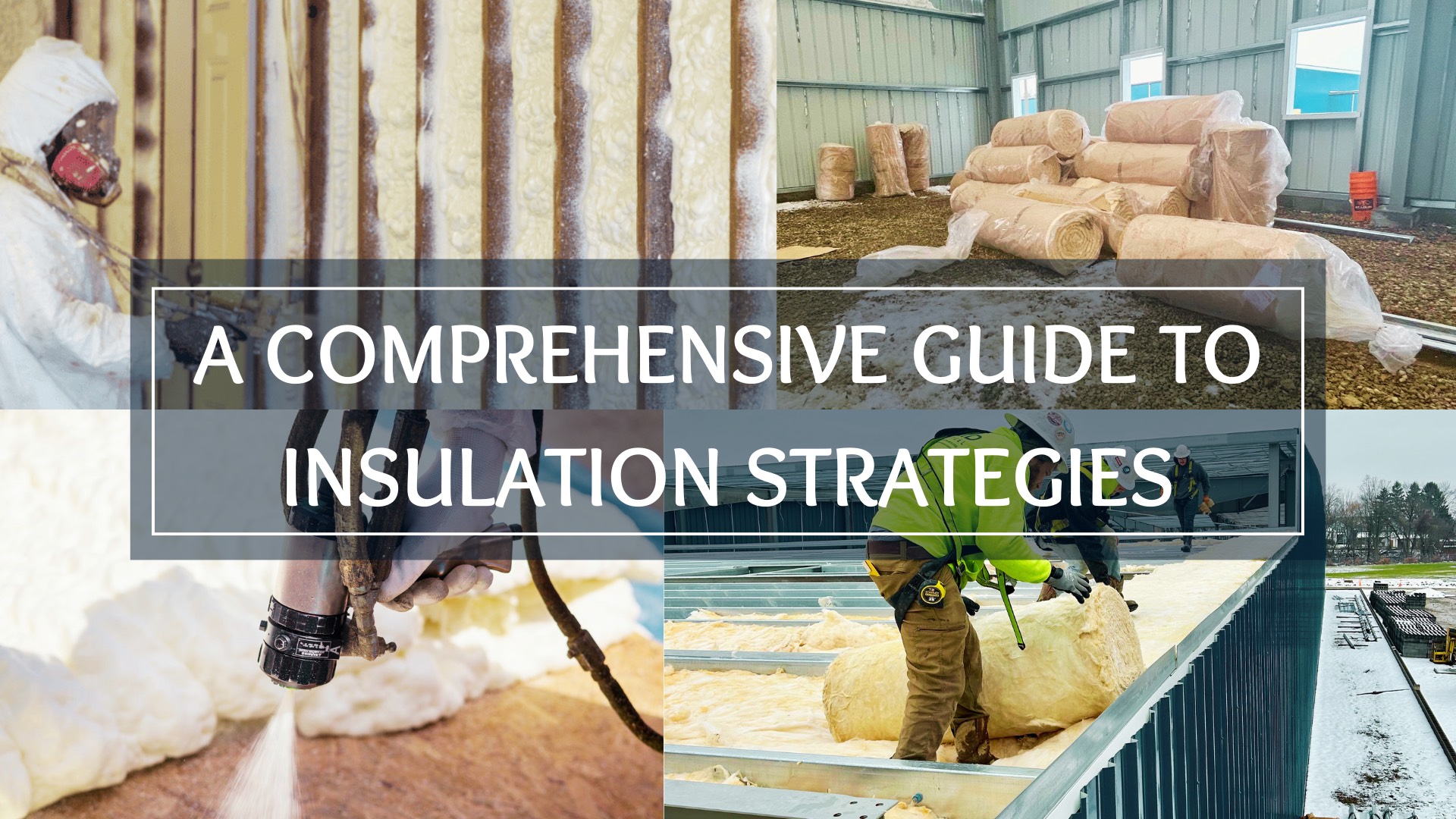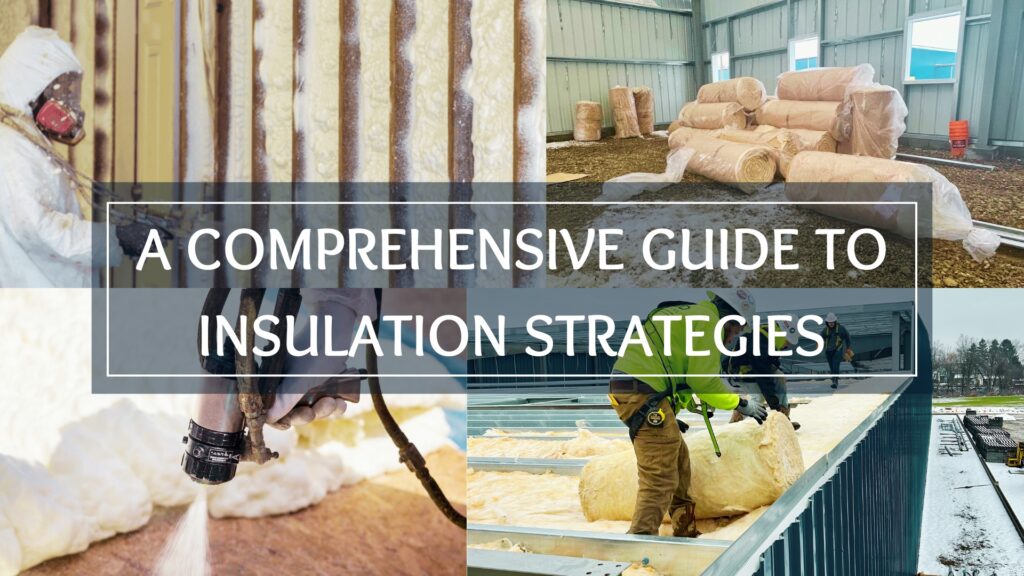
A Comprehensive Guide to Insulation Strategies: Techniques and Choices for Optimal Efficiency
In the intricate dance of constructing energy-efficient, comfortable spaces, the choreography of insulation takes center stage. As architects and builders navigate the myriad options available, understanding different insulation techniques becomes crucial. From classic methods like sag and bag, rollout, and simple saver to comparing solutions like spray foam and fiberglass, each has its own role in shaping the thermal performance of a structure. This article explores these techniques, delving into their applications, cost considerations, and the ideal scenarios for their use in various building types.
Table of Contents
Comparing 2 Types of Insulation
- Spray Foam Insulation: Sealing the Deal with Precision

Technique: Spray foam insulation is applied as a liquid, expanding to fill gaps and creating a seamless, airtight seal.
Applications: Ideal for irregular spaces, crawl spaces, and areas with complex geometries, spray foam insulation excels in achieving airtightness.
Cost Considerations: Spray foam insulation tends to have a higher upfront cost compared to traditional methods. However, the long-term energy savings and efficiency gains often make it a cost-effective choice.
- Fiberglass Insulation: Versatility Meets Affordability

Technique: Fiberglass insulation, available in batts, rolls, or loose-fill, is a versatile option installed between framing members.
Applications: Widely used in residential and commercial buildings for walls, attics, and floors, fiberglass insulation provides a balance of affordability and efficiency.
Cost Considerations: Fiberglass insulation is known for its cost-effectiveness. While installation costs are generally lower, it remains a popular choice for those seeking a budget-friendly solution
Fiberglass Installation Methods:
- Sag & Bag: Time & Cost Effective
- In sag and bag insulation, batts or rolls of insulation material are installed between framing members, allowing for some flexibility in fitting.
- Commonly used in residential buildings for walls and attics, sag and bag insulation is straightforward and effective for standard spaces.
- Sag and bag insulation, particularly fiberglass and mineral wool, tend to be cost-effective. The simplicity of installation contributes to lower labor costs.
- Rollout: Effortless Efficiency
- Rollout insulation involves unrolling insulation material across a surface, such as under the roof paneling and between rafters, ensuring consistent coverage.
- Well-suited for steel roofs and open spaces, rollout insulation provides a quick and efficient solution for covering large areas.
- Including fiberglass and mineral wool options, it is generally cost-effective due to its ease of installation, reducing labor expenses.
- Simple Saver System: Stitching Comfort & High Performance
- The simple saver system involves installing fabric over the purlins before placing fiberglass insulation, creating a continuous thermal and vapor barrier.
- Commonly used in metal buildings for roofs, the simple saver system offers enhanced thermal performance.
- While the upfront cost may be slightly higher due to the added fabric, the long-term energy savings often justify the investment, especially in large industrial structures.
Choosing the Right Technique for Each Building Type
Residential Buildings:
Ideal Techniques: Sag and bag, rollout, and fiberglass insulation.
Considerations: Cost-effectiveness and ease of installation are paramount in residential projects.
Commercial Buildings:
Ideal Techniques: Rollout, fiberglass insulation, and simple saver system.
Considerations: Balancing cost with performance, with attention to achieving consistent insulation in large spaces.
Industrial Buildings:
Ideal Techniques: Spray foam, simple saver system, and rollout.
Considerations: Prioritizing efficiency and airtightness in large, expansive structures often found in industrial settings.
Crafting Comfort, One Technique at a Time
As the curtain falls on the exploration of insulation techniques, architects and builders are armed with a nuanced understanding of each method’s strengths and applications. Fiberglass using the methods of; sag and bag, rollout, and simple saver offer cost-effective simplicity, while spray foam provides more precision and efficiency. The choice depends on the unique requirements of each building type, be it the familiarity of residential spaces, the expansive designs of commercial structures, or the complex geometries of industrial settings. In the grand performance of constructing energy-efficient, comfortable spaces, the mastery of insulation techniques takes center stage, ensuring that each building stands not only as a testament to strength but also as a model of efficiency, comfort, and long-term sustainability.
Why Choose Solid State Steel?
Solid State Steel can create a custom building that is tailored to your exact need. With years of experience and professional knowledge of materials, Solid State Steel is ready to create the steel building of your dreams. We work in both residential and commercial capacities, so check out some of our past projects to get inspired.

